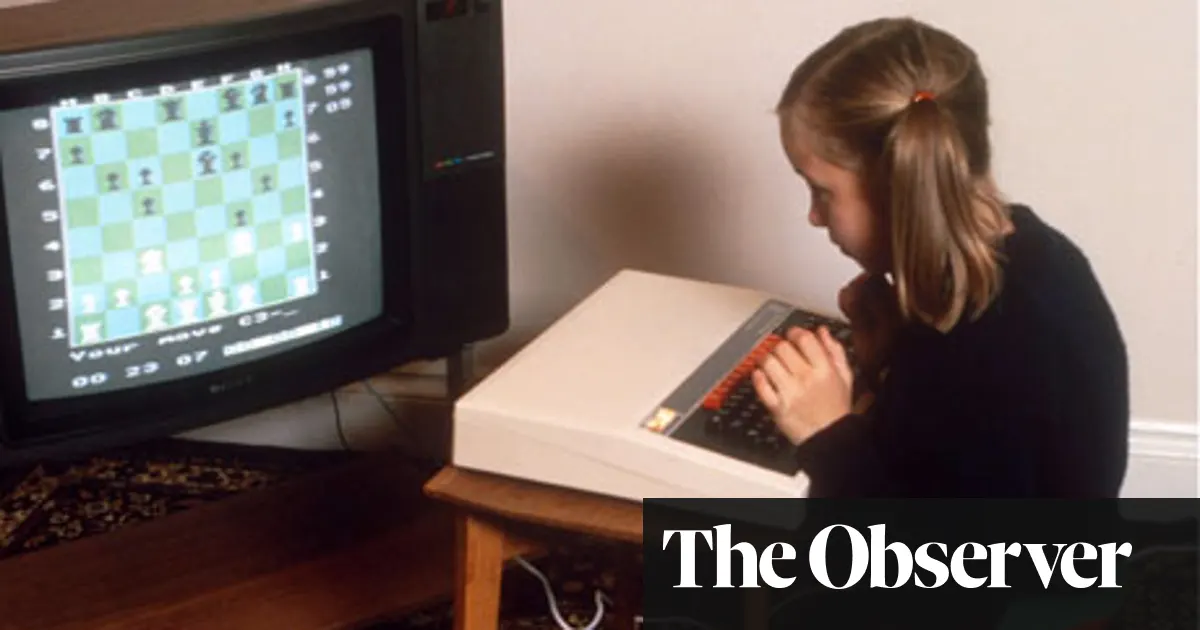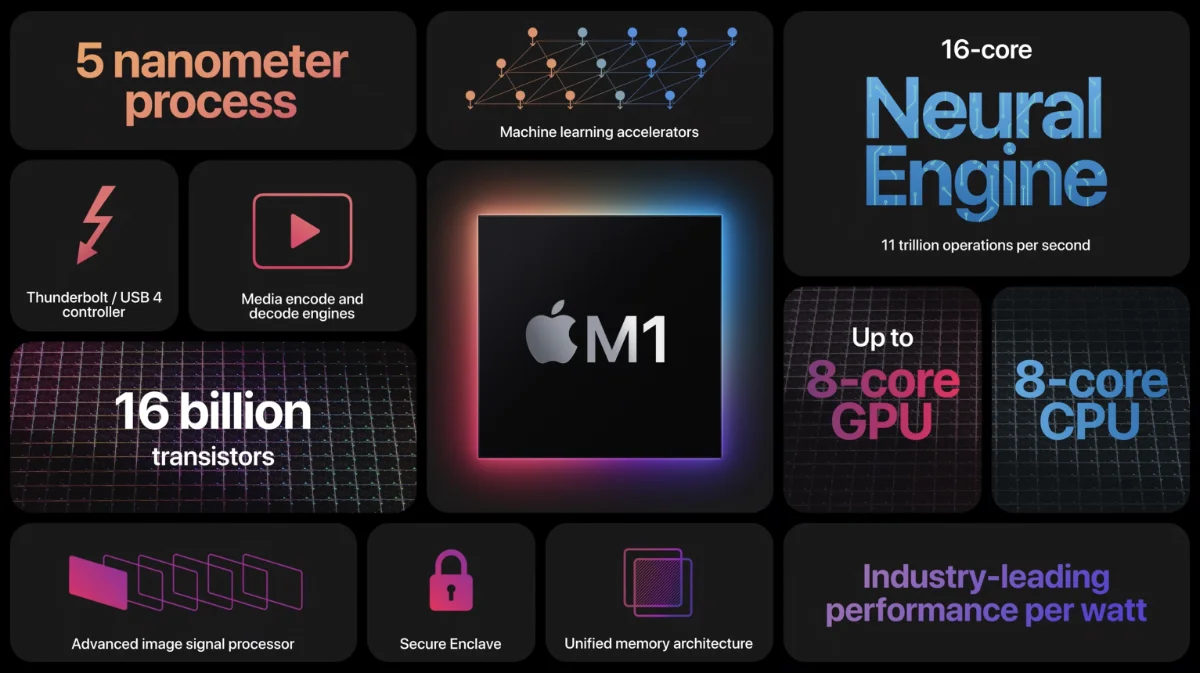Since 2007, a different kind of computer chip has taken the world by storm. What happened in 2007, was the launch of the first iPhone by Steve Jobs where he unveiled a new iPod, a new internet device and a telecommunication device. Since then, Google jumped on the bandwagon by sponsoring the development of the Android OS which made 2010s the Age of the Smartphone. With the rise of the smartphone, the chip that powers it also rose to prominence. That chip is called ARM. Although both Android and Apple iPhone use different kinds of chips that are incompatible, both use the same ARM instruction sets to run their software.
Now in 2021, 4 out of 5 people on the planet uses a smartphone which means all of them are running some sort of ARM derived chip. Add on to all the new SmartTVs, Smart appliances, internet of things and cars that run some sort of ARM chip, there might be more ARM-derived chips than there are humans on the planet.
A “new” contender has entered the game and it is called RISC-V (pronounced risk-five). It sets be the next Linux of computer chips. Just like Linux, RISC-V is open sourced and can be used by anybody who wants to make their own chip. But what really is this RISC-V and how it is different from ARM that we know and love and how it will change the future of computing?
Executive Summary:
- The rise of smartphones in general and iPhone in particular also meant the rise of the ARM chip
- ARM has gone from low-power low-performance chip to highly efficient high performance chip
- RISC-V, a new alternative appears on the scene with Google, Intel and ZTE as backers
- RISC-V schematics are open-sourced and license free, good for companies who want create a base chip to be use with their servers or network switch
- RISC-V is nowhere near ARM right now, but always good to have competition to bring out the best ideas.
Brief History
ARM

ARM stands for Advanced RISC Machines. It started out its life as Acorn Computers, which is a British outfit specializing in making education computers, most notably the BBC Micro which was popular in the 1980 in the UK.
They say necessity was the mother of invention and in the early 1980s, the computing scene was much different than it is today. Back in the 1980s, it was the dawn of the personal computing age. IBM was the king and Apple was the upcoming underdog that wanted to punch above their weight class. Acorn need something to different them from the competition and the goal was set: make a computer that will be use for business that is 10 times more powerful than their popular BBC Micro but at the same price point (235 pounds)

After doing their research, they decided that they will build their own chip. Back then making a microchip meant you had to have your own foundry like Intel and there was no such thing as a contract foundry like TSMC of today. They partnered up with VLSI in Silicon Valley and after a few years of hard work, ARM1 was born in 1985.
A few years and iteration laters, the chip is found on devices that require low power but decent performance. One of the most famous applications was the Apple Newton PDA, which one considers the predecessor of the iPhone.
RISC-V

RISC-V (pronounced risk-five) is born out of a university project with a ragtag group of people who want to overthrow the system. Actually, the last part is just made up. The project started in 2010 when Dr. Krste Asanović, a professor of computer science in UC Berkeley wanted to make a specification of an open source computer system. Just like Linux, it was meant to be “a short 3-month project with a couple of graduate students”. He enlisted the help of Dr David Patterson, a fellow UC Berkeley professor who pioneered work in RISC chips in the 1990s and then RISC-V was formed.
Later, the RISC-V foundation is established to maintain, public, own and promote the RISC-IV IP and help liaise with commercial entities. The operation which was started in California was moved to Switzerland because of the US’s export restriction on advanced computer chips. Today it boasts around over 1,000 members (companies) in 50 countries with some heavyweights like Huawei, Alibaba, Google, Nvidia and IBM as their members.

Similarities
In the basic sense, both chips had the same design concept but made a few decisions that changed how everything works. Both are basically RISC (Reduced Instruction Set Computer), in contrast to CISC (Complex Instruction Set Computer). The major difference between RISC and CISC computers is how the instructions are sent to the computer. The RISC has fixed length instructions and is very simple, whereas CISC can have variable length instructions which can be very complex. Both have its advantages and disadvantages, but in general, RISC computers are simpler.
Both companies utilized the load-store architecture. What this means is that registers, the part when actual values are computed inside a CPU are used only to manipulate the data while the data storage is offset to the memory or in some cases, a different storage device.

Both support 32-bit or 64-bit instruction sets, which means the amount of memory that they support is also the same. They also have optional modules to make certain tasks faster or even possible.
Differences
So now into the differences. Both have different philosophies on designing the chip, so the end result will be vastly different because of such policy.

In RISC-V, the philosophy is that you will have the most basic functions in the base design and various modules are added as you need. In the base module, you only have integer registers. You cannot even do floating point operations in the base design. The reasoning behind this is that you can add your custom solution to floating point as you wish or use the one made by RISC-V.
Another design hallmark of the RISC-V is that it was designed to be as simple as possible. While in ARM you can set the memory addressing in bi-endian, meaning that memory address can be described in either sequence of bits, RISC-V only supports little endian, the least significant byte is at the smallest address.

ARM took a completely different approach from RISC-V. They way ARM business works is that they don’t sell the chips that they design, but license to other people and get a cut through royalty agreement. There’s two kinds of licensing agreements. The first is you use the ARM design chip and maybe add a couple of your custom modules. Most chip manufacturers does this. Another is you license the architecture and design the chip from ground up. The requirements are few, but it has to be bitcode compatible with the rest of ARM architecture, meaning the new chip can run any binaries compiled for ARM chips. Only a few manufacturers do this because there’s a lot of resource and expertise needed to build a chip from the ground up. One of them is Apple for their A-series and now M-series chips.
Since ARM is meant to be used as a very capable general purpose computer, the design is very complex but highly functional. Compared with RISC-V where almost everything is optional, ARM’s base module is very complete and extensive. Some may not like it because it will add up cost when building the final product, but some will like it because it is very capable. Imagine like Linux where the kernel itself is only around 70MB that will be the interface between you and the chip, but distributors will add gigabytes of tools and apps to make the final Linux Distro more user friendly or capable.
A non-exhaustive list of differences between ARM chip and RISC-V. These are based on their core model, not something that a vendor customized for their own solutions.
| Feature | ARM | RISC-V |
|---|---|---|
| Managed By | ARM Inc. | RISC-V Foundation |
| Instruction Set | A64 | ... |
| Architecture | load-store | load-store |
| Memory Addressing | 64-bit Virtual | 32 / 64-bit |
| Instruction Set Width | 32-bit | 32-bit |
| Instruction Set Compression? | Yes to 16-bit | Yes to 16-bit |
| License | Core / Architecture | Open |
| Endianess | Bi | Little |
| Integer Registers | 31 | 32 / 16 |
| Floating Point Registers | 32 | Add-On |
| Vector Registers | 32 | Add-On |
| Multiplication? | Included | Add-On |
Current Use
Since ARM has been in business for a long time and was working as a commercial enterprise since day one, it was a wide following in the business world. Apple is one of the early users of ARM which resulted in the “too-early-for-its-time” Newton personal digital assistant. Other cottage industries have grown to be industry titans like Samsung, Qualcomm and TSMC.
RISC-V on the other hand started as a university project which morphed into a commercial project. Just like Linux when Microsoft was the king of the hill, RISC-V is considered the new kid on the block despite being in business" for almost 10 years. There’s no chip that can match ARM performance at the moment, but since it is royalty free and open source, there is a lot of corporate interest because it is never easier to make your own custom chip and there’s a lot of people who have the need to make their own chip.

Which is better?
Now comes to the question, which is the better chip for use in desktop, laptops and mobile phones. There is no simple yes or no answer for this and both have their strengths and weaknesses. The definition of “better” also is different for different groups that they are targeting. Some will appreciate the long experience in the industry that ARM has, the support they have behind them and the familiarity that they gain by being ubiquitous in the market.
Meanwhile, one would appreciate RISC-V as a fresh take on the problem of providing the end user the maximum amount of performance using the least amount of power. The design being open source and free-as-in-beer is also it’s bonus point. The simplicity of the core module also might attract companies and individuals who plan to build their own chip in the future, but using the blueprints as a guiding post of their future.
What is good that there’s now no easier time to design your own chip since the tools are now more accessible than ever for the common person.
Yes, while it’s possible to build your own chip in your basement, but the technology that it makes was compared to something way back from the 1970s … for now. It is possible in the future that technology will advance far enough that you can make a decent microprocessor at home, like a 1st Gen Core in 2030s.Future trends
It is hard to predict the future but one can undoubtedly say, the future is RISC machines be it in the form of ARM in every mobile phone or RISC-V in every other device. For the short term future, ARM has big corporate backers like Qualcomm for Android / Windows camp and Apple with their iPhone and Macs. RISC-V is generating interest for every other company that needs low-cost custom solutions like Internet of Things manufacturers, cloud computing operators or even universities doing their research works. It is no wonder that companies like Google, and other Chinese companies are interested in RISC-V designs.
References
- RISC-V - Specifications
- ARM - ARMv8 Specifications
